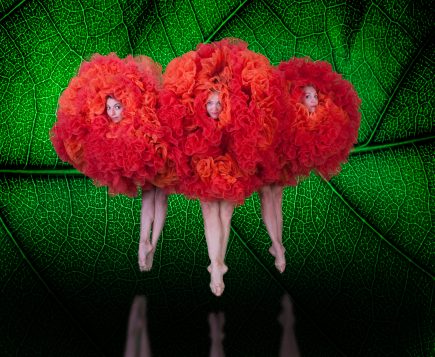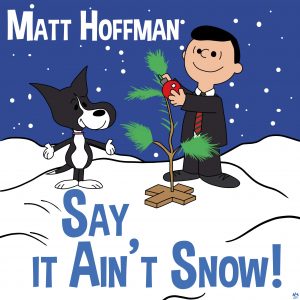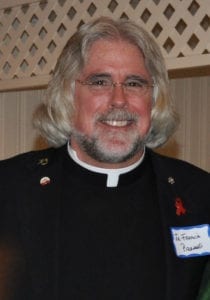By Melissa Arnold
There’s nothing quite like the energy of a live performance, especially if it’s been almost two years since your last show.
The Staller Center for the Arts on the campus of Stony Brook University is as eager to welcome audiences back as showgoers are to be there. Following an abbreviated but otherwise successful fall season, their upcoming spring lineup will feature a wide mix of dancing, theatrical performances and comedy.
“I had a lot of theatrical events planned for the fall, but when we scheduled them earlier this year, we had no idea what the rules were going to be for health and safety,” said Alan Inkles, the Staller Center’s director. “So we decided to focus more on bands for the fall and concentrate on theatrical performances in the spring. It’s been smooth, and everyone is just glad to be out and enjoying the theater.”
It’s a special year for the center’s quartet-in-residence. The Emerson String Quartet recently announced they will retire in 2023 after more than 40 years of performing as one of the world’s premier chamber music ensembles. They’ll be presenting two concerts this spring on Jan. 26 and April 18.
For a quarter of a century, the Broadway rock opera Rent has broken down taboos as it chronicles a group of friends fighting poverty, discrimination and addiction in the midst of the AIDS epidemic. This fall the cast kicked off their 25th Anniversary “Farewell Season of Love” tour which will include a performance at the Staller Center on March 3.
“You never know when you’re going to be seeing a show for the last time, and with something as iconic and well-known as Rent, we want to give as many people as possible the opportunity to see a wonderful, high-quality touring production,” Inkles said.
Grace, skill and beauty are all on display this season with two unique dance companies. Complexions Ballet Company pushes the boundaries of traditional and contemporary styles while tackling a variety of topics, from current events to diverse cultures and renowned musicians. Look out for “Love Rocks” during the Feb. 5 show, which celebrates the music of Lenny Kravitz.
Dance-illusionists MOMIX return to the Staller Center on April 2 for “Viva MOMIX,” a two-act collection of dance vignettes using light, shadow and props to create stunning effects. The vignettes will take the audience on a magical journey that showcases the greatest moments in the company’s 40-year history.
If you’re looking for something interesting for kids, consider The Queen’s Cartoonists on April 5. These jazz and classical musicians will take you on a crazy romp, playing live music to accompany cartoons projected onscreen above them. The cartoons are from a variety of time periods and countries, allowing audience members of any age to enjoy old classics and new discoveries.
“The Queen’s Cartoonists is a 7 p.m. show, which gives families a chance to enjoy it without staying out too late — it’s always great to introduce kids to live and orchestral music by letting them see it up close,” said Daria Carioscia, Staller’s director of development. “They’ll be performing in our recital hall, which provides a great perspective from wherever you’re sitting, and the cartoons playing behind them will be entertaining and fun for everyone.”
Carioscia also recommends the high-energy, New Orleans jazz sounds of The Hot Sardines on March 19, as well as the May 7 appearance by The Doo Wop Project. If you’ve ever wondered what the music of Jason Mraz and Maroon 5 would sound like if the Jersey Boys sang it, look no further. Both shows are heavy on audience participation, so get ready to sing and dance along. It’s a great time to introduce kids to different genres and eras of music they may have never heard before, she said.
A few more events round out the season:
■ March 12: 2022 Gala, including performances by Emanuel Ax, Leonidas Kavakos, and Yo-Yo Ma. Regular tickets are sold out. Become a Gala Supporter to receive VIP tickets.
■ March 30: “Starry Nights,” an evening of music featuring cellist Colin Carr and Stony Brook University musicians
■ April 21: “Queen of the Flute” Carol Wincenc
■ April 22: Comedian, satirist and Grammy nominee David Sedaris
Of course, the Staller Center staff and performers all love to see their shows sold out. But when that’s not possible, they get creative and offer a seat to those who might have never seen a live performance before.
“We’ve been working really hard to fill the theater, and on the nights where we have unsold tickets, we give them away to local school districts, Stony Brook students, and other populations who wouldn’t otherwise have the chance to attend,” Carioscia explained. “Ultimately, we want to make the arts accessible to as many people as we can. It’s good for the community, and a full house also changes the energy in an exciting way for our performers.”
The staff knows that there is still some understandable concern in the community about crowds and public events, and they are dedicated to helping audiences feel safe. Masks are required in the center, as well as either proof of vaccination or a negative COVID test. No time frame is required on testing. Additionally, concessions are not being sold at this time to limit the need to remove your mask.
“We recognize that everyone is in their own place regarding what they feel comfortable doing right now. People will come back when they’re ready, and we’re going to be fair with what we’re asking from our audiences as far as safety,” Inkles said.
“It’s been smooth, and everyone is just glad to be out and enjoying the theater. We’ve spent the last 2 years stuck inside at home, watching movies on big screen TVs. We want to give people the energy of live performance, the opportunity to have a night out and spend time together and connect again. You can’t duplicate that experience with Netflix or HBO. There’s nothing else like it.”
Stony Brook University’s Staller Center for the Arts is located at 100 Nicolls Road, Stony Brook. Tickets for the Staller Center’s Spring 2022 season are on sale now. A 10 percent discount is offered on all shows through Dec. 12. For more information, visit www.stallercenter.com or call 631-632-ARTS (2787) or email [email protected].
All photos from Staller Center for the Arts.

















 Welcome to Dickens in December! The 25th annual Charles Dickens Festival has been gently extended with activities on Saturday, Dec. 11 and 18. The Village will present two concerts per day, one in the Masonic Lodge and one in the Village Center’s Skip Jack room. The not-to-be-missed Festival of Trees will delight all those who visit the Village Center’s second floor and the streets will once again play host to a host of Dickens street characters.
Welcome to Dickens in December! The 25th annual Charles Dickens Festival has been gently extended with activities on Saturday, Dec. 11 and 18. The Village will present two concerts per day, one in the Masonic Lodge and one in the Village Center’s Skip Jack room. The not-to-be-missed Festival of Trees will delight all those who visit the Village Center’s second floor and the streets will once again play host to a host of Dickens street characters.





 The sense of discovery in “The Christmas Song” is unique and surprisingly introspective. “Silver Bells” readily zings from a pastoral stroll in the snow to the lights of the city, showing off his jazz chops with masterful scatting. The simplicity and honest clarity of “O, Holy Night” is the perfect contrast to his letting loose with the final song, an exuberant, wry, “Run, Rudolph, Run.” In every number, Hoffman doesn’t just sing—he paints a vocal picture that is rich, evocative, and inviting.
The sense of discovery in “The Christmas Song” is unique and surprisingly introspective. “Silver Bells” readily zings from a pastoral stroll in the snow to the lights of the city, showing off his jazz chops with masterful scatting. The simplicity and honest clarity of “O, Holy Night” is the perfect contrast to his letting loose with the final song, an exuberant, wry, “Run, Rudolph, Run.” In every number, Hoffman doesn’t just sing—he paints a vocal picture that is rich, evocative, and inviting.





